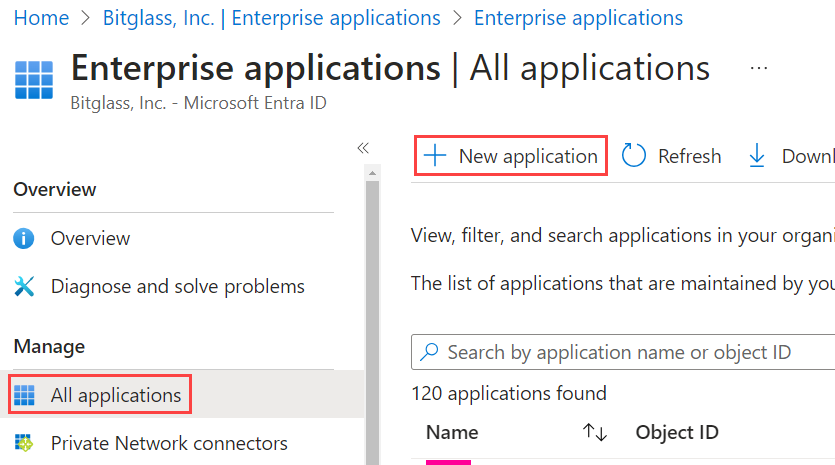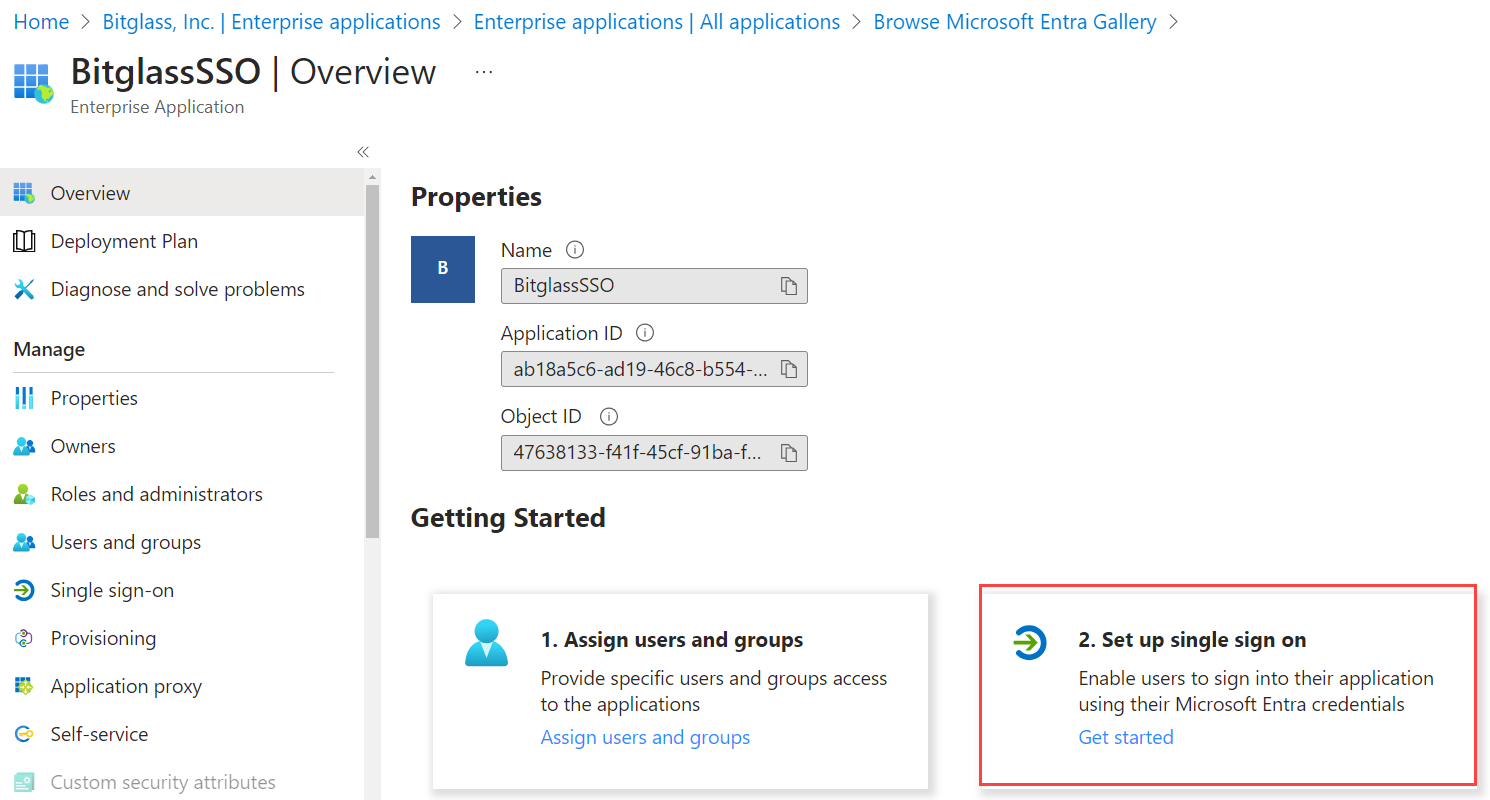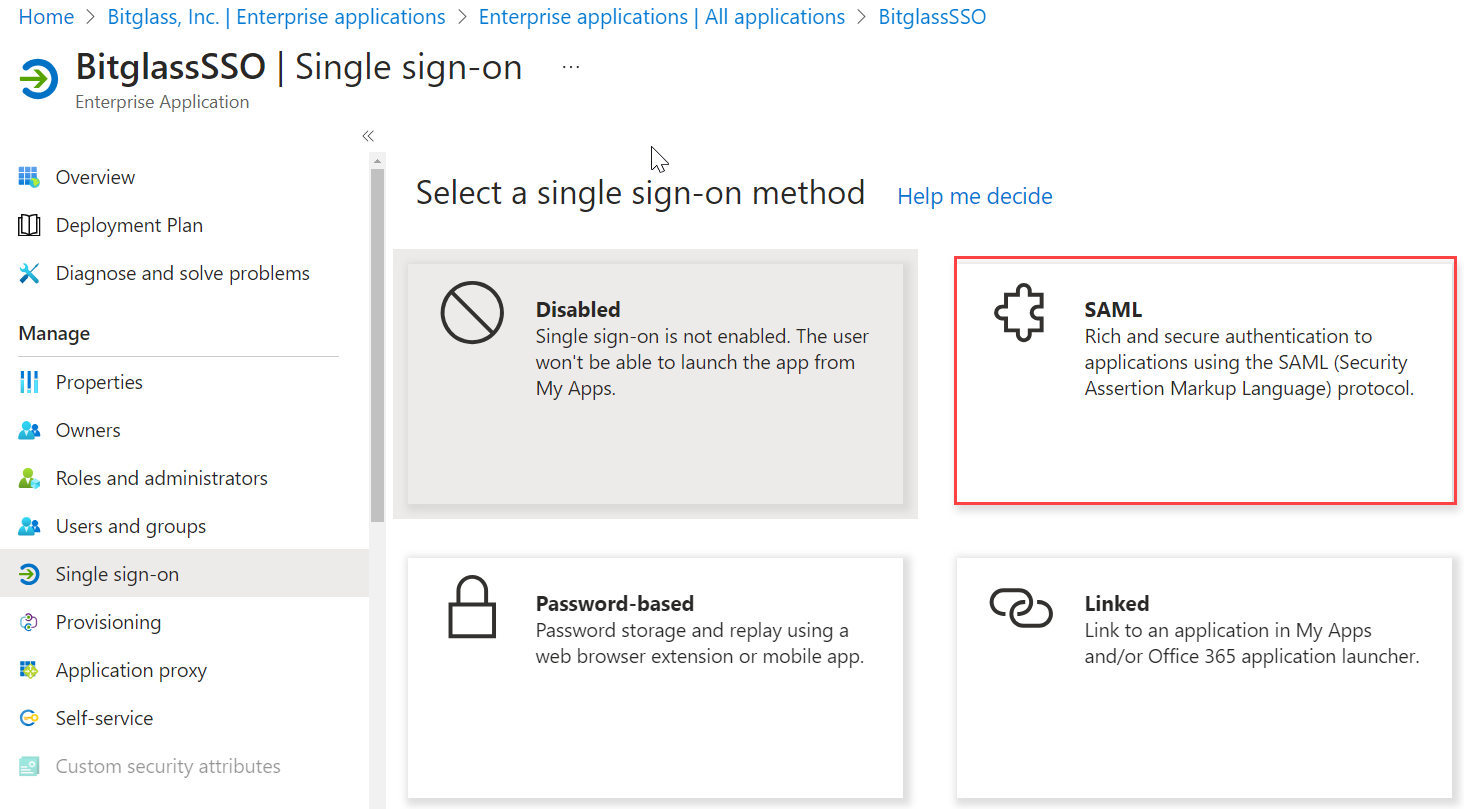You can set up Microsoft Entra ID as an IdP within Forcepoint Data Security Cloud | SSE. This setup will work to configure SAML SSO proxy authentication with any apps outside
of Microsoft apps.
Attention: Azure Active Directory (AD) is renamed as Microsoft Entra ID.
Note:
- SAML proxies cannot support applications with their own internal IdP system. This is because the application needs to point to the SAML proxy, in this case Forcepoint Data Security Cloud | SSE, as its IdP and then Forcepoint Data Security Cloud | SSE will point to the external IdP as the true source of
authentication. When the app and IdP are part of the same ecosystem, this causes a login loop (user attempts to login to M365, is sent to Forcepoint Data Security Cloud | SSE who sends them to Microsoft Entra ID which checks the M365 setup and sends them back to Forcepoint Data Security Cloud | SSE).
- To use Microsoft Entra ID as an IdP for Microsoft 365 applications, follow the steps in Microsoft Entra ID IdP: Configuring Reverse Proxy for Microsoft
365.
Steps
-
Log into your Azure admin portal and navigate to .
-
On the Enterprise Applications page, select All applications and then click New application.
-
On the Browse Microsoft Entra Gallery page, click Create your own application.
-
On the Create your own application dialog that appears on the right:
-
Enter a recognizable application name.
-
Ensure Integrate any other application you don't find in the gallery (Non-gallery) is selected.
-
Click Create.
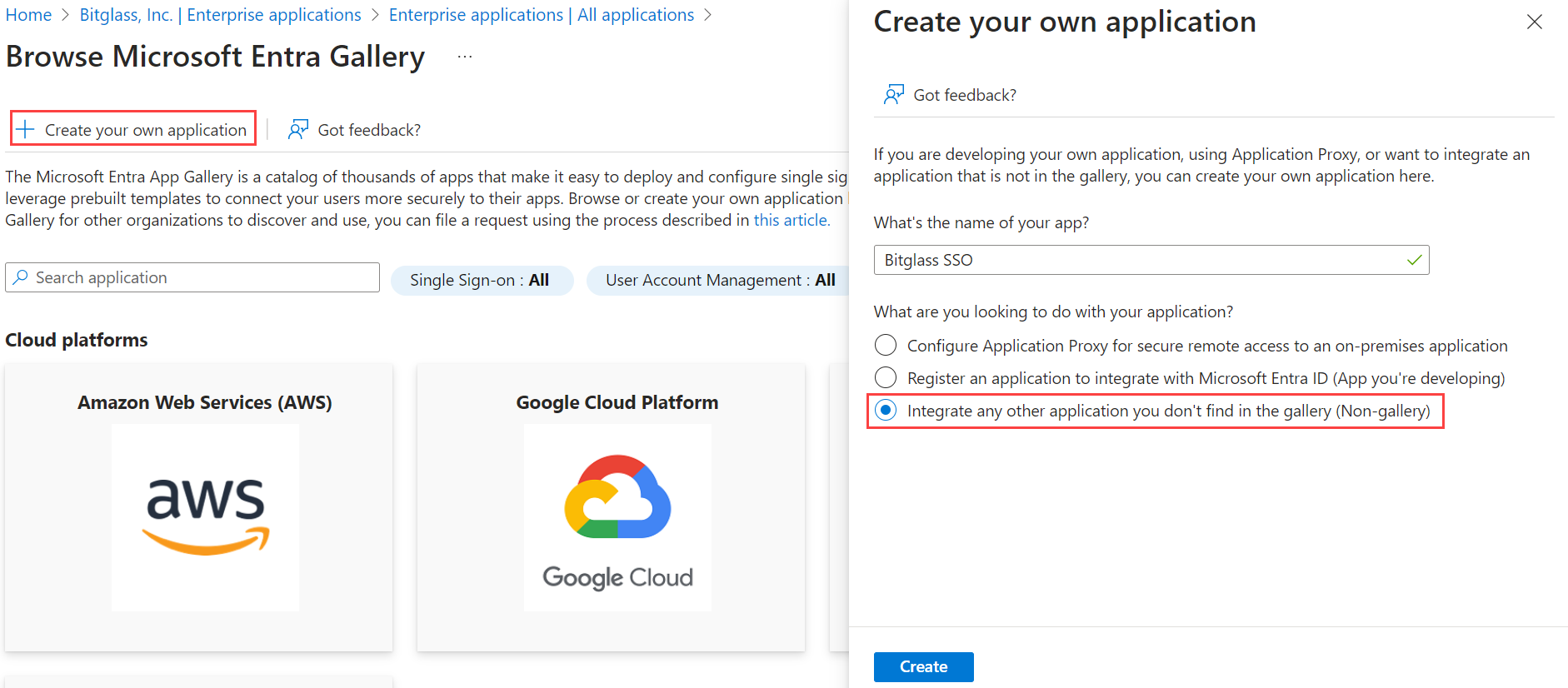
Wait for the application to get
created.
-
On the newly created app page, select Assign users and groups and assign the users/groups that will be accessing apps and authenticating through Forcepoint Data Security Cloud | SSE.
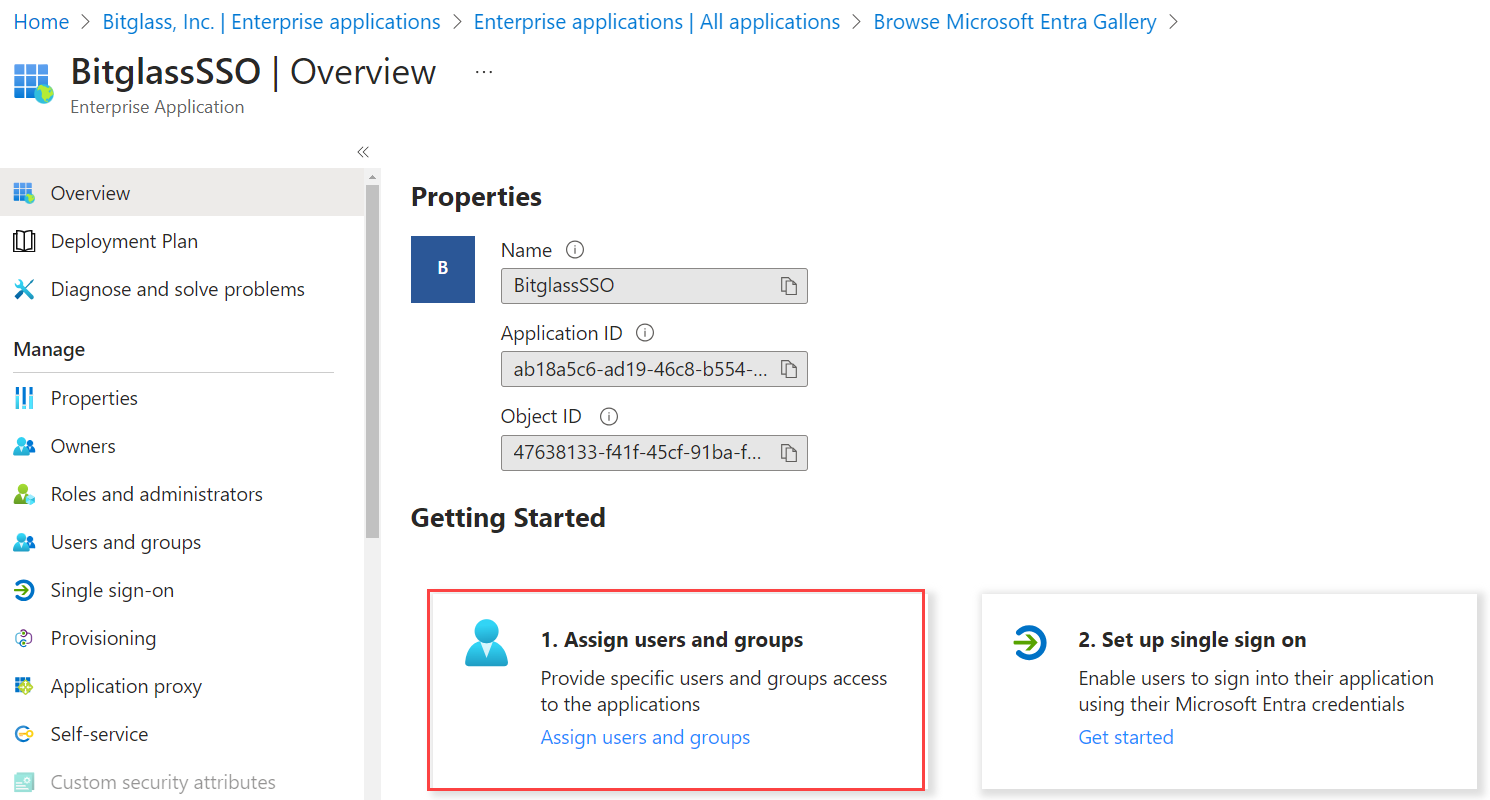
Note: Forcepoint Data Security Cloud | SSE UI supports UTF-8 characters. However, the SAML assertion only supports low-ASCII characters as attribute values. If an attribute
value contains characters that are not low-ASCII, then SAML sign-in failures occur.
-
Once you have assigned your users/groups, select Set up single sign on and then click SAML.
-
On the Set up Single Sign-On with SAML page:
Section 3: If you have not created a SAML Signing Certificate already, you will need to create one. If you have already created one skip to step 8. Otherwise, click
Add a certificate and then in the new tab window that appears, click
New Certificate. Then set the fields as below and
Save.
- Signing Option: Sign SAML assertion
- Signing Algorithm: SHA-256
Leave this page open.
-
Open a new browser window/tab and login to your Forcepoint Data Security Cloud | SSE
admin portal.
-
Navigate to and then click the green icon to add a new External IdP.
-
On the new IdP object page, provide a name and then select Other IdP from the IDP Type drop-down. Copy information from the Forcepoint Data Security Cloud | SSE IdP object setup to the Set up Single Sign-On with SAML page in Azure setup (step 7).
-
Copy the Forcepoint Data Security Cloud | SSE
Saml Entity ID to the Identifier (Entity ID) field in Azure.
-
Enter https://portal.bitglass.com/sso/acs/ to the Reply URL
(Assertion Consumer Service URL) field in Azure.
-
Enter bg_azure_ad_rp_login in the Relay State field.
Important: You should enter value in the Relay State field only when you are configuring Microsoft Entra reverse proxy
application.
-
Copy over information from the Azure page in step 7 to Forcepoint Data Security Cloud | SSE.
-
Download the certificate created in Step 7 above as Base64 and then upload it to the Token Signing Certificate field in Forcepoint Data Security Cloud | SSE.
-
Copy over the Login URL from Azure to the Login URL field in Forcepoint Data Security Cloud | SSE.
-
Copy over the Logout URL in Azure to the Logout URL field in Forcepoint Data Security Cloud | SSE.
-
Click Save on both pages of setup.
Now you are set to use Microsoft Entra ID as the IdP for other applications protected by Forcepoint Data Security Cloud | SSE.
-
On the Forcepoint Data Security Cloud | SSE portal:
-
Navigate to page.
-
On the Username Domain and User Authentication section, click the username domain that is in question.
-
On the Username Domain dialog, select the External Identity Provider option as the Authentication method
and then select IDP that you just created in step 10 from the IDP Object drop-down.
-
Click Save.
Now the users are enforced to get authenticated by the selected Microsoft Entra ID IdP.
